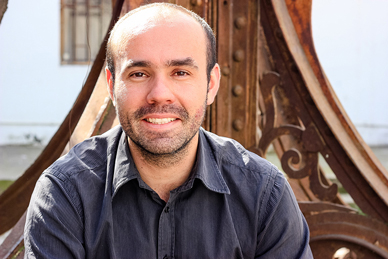In large cities like Santiago, the quality of life is strongly related to the quality of the environment of the urban settings we live in. This is the core idea of the study “Socio-ecological quality in urban settings: improvements for a human-scale sustainable environment. Municipality of Quinta Normal,” a Dicyt project developed by Dr Alexandre Carbonnel and Rodrigo Martin, both professors at the School of Architecture of Universidad de Santiago. The study seeks to provide a tool for assessing the quality of urban life, considering environmental conditions (thermal, acoustic, and atmospheric ones) at urban settings.
“Socio-ecological quality in urban settings: improvements for a human-scale sustainable environment. Municipality of Quinta Normal,” is the name of the study conducted by Dr Alexandre Carbonnel and Rodrigo Martin, both professors at the School of Architecture of Universidad de Santiago. The project has been funded by the university’s Scientific and Technological Research Department (Dicyt, in Spanish) and it has the purpose of providing a tool for measuring the quality of urban life, considering environmental conditions (thermal, acoustic, and atmospheric ones) at urban settings.
The first measurements will be done at the municipality of Quinta Normal, an area of the capital of 12.4 square kilometers wide, with a population of 105 thousand people, according to the national census of 2002.
This municipality is significant for the study, as it displays several special characteristics: In spite of being close to Santiago Centro, it has several industries; it adjoins Quinta Normal Park, one of the largest green areas of the capital managed by the Municipality of Santiago; and it is traversed by some of the busiest streets of the city, like Matucana, Costanera Norte Highway, Avenida San Pablo, and Central Highway (General Velásquez).
The first hurdle to be cleared was to define the study areas. For this purpose, the research team developed “a methodology to identify the use of the urban setting as of the use of transportation and schools, what will allow pinpointing the nodes of very intense use and measure their environmental quality,” Carbonnel said.
In order to relate the urban environmental quality to the use of urban infrastructure and services, variables and indicators related to transportation, health care and education coverage, cultural and commercial spots, green areas, and others, will be analyzed. The researchers will use some software programs (QGis and Grasshopper3d) to cross-check the information and identify the places with higher people density and more use of space.
Once they know the places with higher density and more use, they will measure the urban environmental quality. This process will be based on thermal, acoustic and atmospheric variables, providing a true and varied environmental record of the places to be studied
Study impact
According to Dr Carbonnel, the study impact is aimed at “providing municipalities, regional governments and the community with an important information tool that includes environmental indicators to orient them at managing and making local public policies and to contribute to a better use of the funds invested in infrastructure.”
Dr Carbonnel also said that this methodology will open doors to the creation of a new line of products. “These innovations should aim to democratizing environmental information, in agreement with the vision of the Smart City Lab research center of our university.” Both researcher work at this center, together with other professionals of the School of Psychology and the Departments of Industrial Engineering, Geographic Engineering, Electric Engineering and Computer Engineering.
Translated by Marcela Contreras
Noticias
19 November 2015



